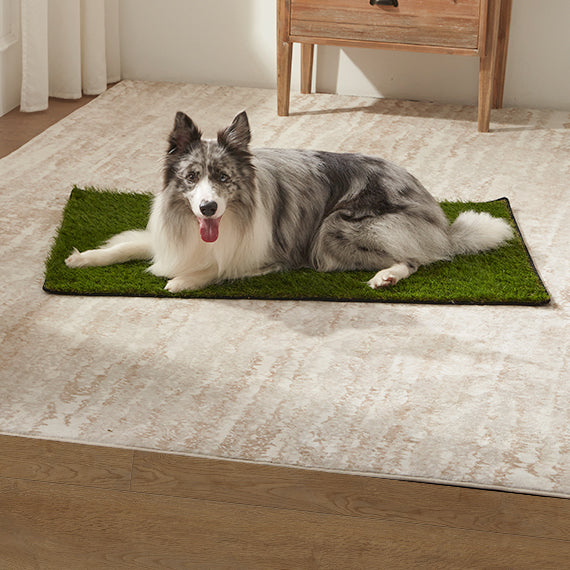The Ultimate Cat Litter Showdown: Find the Purr-fect Match for Your Feline Friend
Choosing the right cat litter for your kitty might seem simple, but it’s actually a task full of hidden secrets. With so many options on the market—different materials, features, prices, and their impact on both your cat and the environment—every cat parent has faced the overwhelming decision of picking the best one. So, how do you find the litter that will make your furry friend fall in love with their bathroom routine? Let’s dive into the world of cat litter, exploring different types, your cat’s preferences, ease of cleaning, health and safety, and more to give you the full scoop.
First up: The main types of cat litter and what makes them special. You’ve probably seen these popular options: clumping clay (bentonite) litter, silica gel litter, wood pellet litter, paper-based litter, corn litter, and tofu litter.
Clumping Clay Litter: The Classic Choice Clumping clay litter is a timeless favorite, known for its superb absorbency and clumping power. When your cat does their business, the litter quickly absorbs the liquid and forms solid clumps, making cleanup a breeze. However, it often comes with a downside—dust. The dust can be a bit of a nuisance, not just for your home but also for the respiratory health of both you and your cat. Plus, clay litter can be heavy to lug around, which isn’t always fun when you’re stocking up.
Silica Gel Litter: The Absorption and Odor Control Champion Silica gel litter is beloved for its outstanding absorbency and powerful odor control. Unlike clumping clay, this type of litter doesn’t form clumps but instead gradually changes color as it absorbs moisture, giving you a visual cue when it’s time for a change. It’s low in dust and excels at keeping unpleasant smells at bay, making it perfect for homes sensitive to odors. However, it tends to be pricier and, because it’s not biodegradable, it’s not the most eco-friendly choice. Be extra careful if you have curious kittens, as ingestion could be harmful.
Wood Pellet Litter: The Eco-Friendly Choice Wood pellet litter is made from natural wood or plant fibers, offering good absorbency and odor control. It’s light, low-dust, and, best of all, it’s biodegradable, making it a hit with eco-conscious cat parents. After use, it can even be composted! However, it doesn’t clump as effectively as clay litter, so you might find yourself cleaning the box a bit more often.
Paper-Based Litter: Lightweight and Low-Allergen Made from recycled paper, this soft litter is ideal for cats with sensitive paws. It’s virtually dust-free, making it a great option for cats with respiratory issues or allergies. While it offers decent absorbency and gentle odor control, it doesn’t clump, meaning cleanup might require a bit more attention. If you’re focused on keeping things green and want to minimize allergens, this litter could be your best bet.
Understanding Your Cat’s Preferences Every cat is unique, with its own quirks and preferences that can’t be ignored when choosing a litter. By observing how your cat reacts to different types, you can find the one that makes them happiest.
Texture Preferences: Some cats love the finer grains of clumping clay litter, while others might prefer the chunkier feel of wood pellets. Watch how your cat behaves after using the box—do they eagerly cover their business, or do they seem uncomfortable? This can give you clues about their satisfaction with the litter.
Sensitivity to Scents: Cats have super-sensitive noses, far more so than ours. If the litter has a strong scent—whether from natural or chemical fragrances—your cat might turn up their nose and refuse to use it. Opting for unscented or naturally fragranced litters could make your cat feel more at ease.
Health Considerations: If your cat has respiratory issues or is sensitive to dust, choosing a low-dust or dust-free litter is crucial. For cats with urinary tract concerns, a litter that allows you to monitor urine color and quantity, like a light-colored clumping clay or paper-based litter, might be best.
Focus on Home Environment and Cleaning Needs Odor Control: A fresh-smelling home is important for everyone. Picking a litter with strong odor control can keep both you and your kitty happy.
Dust Levels: Some litters kick up a lot of dust, which can affect indoor air quality. Choosing a low-dust or dust-free litter will protect your cat’s respiratory health and reduce your cleaning workload.
Ease of Cleaning: Litter that clumps well makes daily cleanups much easier. Look for options that form solid, easy-to-scoop clumps so you can keep the litter box neat without hassle.
Handy Tips
Place the cat litter box in a quiet, safe, and easy-to-access location—away from noisy or high-traffic areas.
Each cat should have at least one cat litter box, and in multi-cat households, it’s wise to have multiple boxes in different spots to meet everyone’s needs.
Litter box liners can make cleanup easier and keep the box cleaner for longer.
Regularly disinfect the litter box, especially if your cat has been sick, to ensure a healthy environment.
Picking the right cat litter for your feline requires considering many factors, including their health, preferences, your home environment, and your budget. By understanding the pros and cons of each type and aligning them with your cat’s needs, you can find the perfect match that keeps your kitty comfy and your home clean, making your life as a cat parent that much easier. We hope this guide helps you in your quest for the ideal cat litter!
